Live on the homepage now!
Reader Supported News
And what John Roberts must do to save it
So what does it have? Nothing but public trust. That trust is now eroding — faster and more dangerously for the Court’s future than at any time in its history. The Supreme Court confronts a profound crisis of legitimacy.
Consider:
1. After several days of hearings last week on the confirmation of Judge Ketanji Brown Jackson, Republicans on the Judiciary Committee made it clear they had no interest in knowing anything about her, but only making false charges and smearing her with innuendo. Her credentials are impeccable, but their relentless and baseless attack on Jackson’s sentencing in child pornography cases demeaned her — and further eroded the Supreme Court’s standing and integrity. (Although Judge Jackson appears certain to win Senate confirmation, almost all of the Senate’s 50 Republicans will vote against her.)
2. Then came the news that Virginia Thomas, wife of Clarence Thomas, had been actively engaged in trying to overturn the outcome of the 2020 election, including being present at the Trump rally immediately preceding the assault on the U.S. Capitol and sending numerous emails to Mark Meadows, then Trump’s Chief of Staff, urging him to find ways to reverse the election. Yet without recusing himself or revealing his wife’s activities, Thomas was the only justice to dissent in the Supreme Court’s decision in January to reject Trump’s request to block documents from being released to the House select committee investigating the January 6 insurrection.
3. The Court’s legitimacy was already under a cloud because of Trump’s and Mitch McConnell’s relentless packing of it. Starting with the blockade of Merrick Garland’s nomination in 2016 and culminating in the rushed confirmation of Amy Coney Barrett just days before the 2020 election, Republicans have signaled that partisanship is at the heart of the court’s decision-making. (Not to forget the right-wing justices who cut off the Florida recount and handed the 2000 presidential election to George W. Bush and the right-wing justices who effectively nullified the Voting Rights Act after Congress voted nearly unanimously to renew it.)
All this worries me on several levels. I know the Supreme Court. (I’m fortunate enough to have argued cases before it. I also clerked for the chief judge of the First Circuit, several of whose decisions went to the Supreme Court.) The Supreme Court can be, and has been, a remarkable institution for the public good. America needs a Supreme Court that can be trusted to make difficult decisions — especially when it comes to protecting the rights of individuals and minorities. The political branches cannot do this because at best they reflect the will of the majority, at worst they reflect the will of the wealthy and powerful.
Yet the Court can protect the powerless in our society only if it is trusted by most Americans. When in 1954 the Supreme Court decided that racially segregated schools violated the constitutional rights of Black children, many Americans were outraged. They ultimately came around, in part because of the trusted role the Court held in American society. When in 2015 the Court narrowly ruled that the Constitution guarantees a right to same-sex marriage, it also faced blowback. Yet here again, its decision was considered the law of the land.
The only person with the stature and responsibility to rescue the Court from its current death spiral is its chief justice, John Roberts. (Those who claim a chief justice doesn’t have power over his colleagues doesn’t understand the Court. A chief has the power to assign the writing of decisions in cases where he’s in the majority. He also has power over countless perks. And he has the informal authority to speak for the Court with the political branches and, unofficially, with the media.)
Roberts must do four things:
1. Push the Court to accept a code of ethics similar to the code now governing the lower federal courts.
2. Ask Clarence Thomas to recuse himself from all further cases involving Donald Trump or the January 6 attack on the Capitol.
3. Become an outspoken public advocate of the Court’s impartiality and a critic of those who would use it for partisan ends.
4. Openly and clearly ask the Senate to conduct confirmation hearings in ways that respect the impartiality and integrity of the Court.
In September 2005, I testified against Roberts’ confirmation to be chief justice because I was not convinced he would adequately protect the Court’s integrity. As I noted then — I’ve included a clip below — Roberts had told the Judiciary Committee that he would side with the powerful (the “big guy”) when the Constitution told him to and with the weak (the “small guy”) when the Constitution told him to. But the Constitution says nothing about protecting the powerful. It is entirely about protecting the rights of individuals and minorities from the powerful.
The Court will not die. But unless Roberts responds adequately to the current crisis of legitimacy, it will be reduced to becoming yet another instrument by which the wealthy and powerful entrench themselves — another casualty of the vicious and divisive era in which we are living.
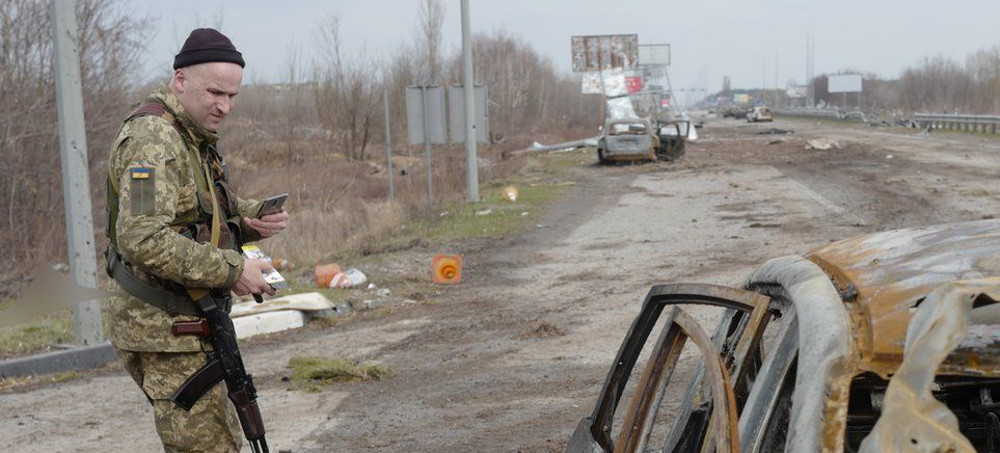 Corpses and burned out cars litter this stretch of the E-40 highway (photo: Jeremy Bowen/BBC)
Corpses and burned out cars litter this stretch of the E-40 highway (photo: Jeremy Bowen/BBC)
Footage of Russian troops shooting a man with his hands up on a highway outside Kyiv at the beginning of March was shared around the world. Now the Russians have been pushed out of the area and the BBC's Jeremy Bowen has been to see the grim aftermath of their short-lived occupation.
This report contains material some viewers will find disturbing
Two of the dead are confirmed as Ukrainian civilians who were killed by the Russians. The others have not been identified yet - they lie where they were killed - but only two are wearing recognisable Ukrainian military uniforms.
Our BBC team was able to get to the area, on the main E-40 highway as it approaches Kyiv, because Ukrainian forces had captured the sector only 10 hours earlier.
The marks of battle and of heavy shelling were everywhere. Petrol stations and a hotel that was well-known for its spa and restaurant were in ruins. Shell holes and craters pockmarked both carriageways.
Ukrainian troops changing a wheel in the ruins of a roadside garage said the Russians were about 4km (2.5 miles) away and had pulled their remaining men and armour back after a hard fight, lasting several days, in the early hours of the morning.
Warning: Graphic video ahead
Left behind in the heart of the desolation were the dead bodies, and a mass of questions and concerns about who they were and how they died.
Some answers already exist for a couple who were killed by the Russians and left to decompose on 7 March. Their rusty, shrapnel riddled car lies in the road next to one of the petrol stations, reduced to a shell by fire. Next to it are the burnt and twisted remains of a body that is just about recognisable as the remains of a man. A wedding ring is still on the corpse's finger. Stretched out inside the hulk of their car is what is left of the incinerated body of a woman, the mouth opened in what looks like a scream.
Their deaths were filmed by a Ukrainian drone on 7 March, operated by the Bugatti unit of Territorial Defence. The unit released the video, which was republished by news organisations around the world. It caused outrage because it showed the cold-blooded killing of a man who had raised his arms to show he was harmless, in the classic gesture of surrender.
The bodies, the BBC discovered in an investigation this month, are of Maksim Iowenko and his wife Ksjena. They were part of a convoy of 10 civilian vehicles who were trying to escape the Russians and get to Kyiv.
As they drove down the road, they spotted a Russian tank in position, dug into the grass verge. The drone video shows it was clearly marked with the letter V, one of the identifiers used by the Russian armed forces. The other cars did quick U-turns and drove away at speed. But Maksim's car stopped, most likely because it was hit.
As soon as the car stopped, Maksim leapt out and raised his hands. Within seconds he was shot dead. His wife was killed in the car. Also in the car were their six-year-old son and the elderly mother of one of Maksim's friends. Both of them survived and were eventually released by the Russian soldiers.
They were found walking back down the road, and the woman told her family that Maksim was shouting that a child was in the car when he was killed. Both survivors, according to the Bugatti drone unit, are now safe but deeply traumatised.
The car is now burnt out, but it was not on fire after the attack. One hypothesis must be that the bodies and the car were set on fire by the Russians to destroy the evidence of what they had done. The Bugatti Unit has submitted its drone video to the Ukrainian authorities and to the Metropolitan Police in London.
More burnt cars and dead bodies line the road for the next few hundred yards. No video has emerged to show what happened. A credible working assumption for any investigation must be that the other dead people were killed by the tank crew, or other Russian soldiers.
Attempts have been made to destroy the other bodies. Some have been left to rot where they were killed. But other corpses have been piled up and surrounded by tyres. Charred clothing indicates attempts were made to set fires around them. Tyres are flammable and must have been placed there as an accelerant.
The emplacement where the tank was dug in has a clear arc of fire across the area where the 13 bodies are lying. The tank has gone but debris was left by its crew, including Russian army field rations. In the woods nearby is at least one other tank, which has been burnt out after being hit by an anti-tank missile.
A Ukrainian soldier produced a wallet he had found in the tank. He emptied out Russian identity papers, bank notes in the Russian currency, the rouble, and small change in Belorussian coppers. The major thrust to the north-west of Kyiv came from invaders who had crossed the border from Belarus, Moscow's ally.
Close by the knocked out tank are the remains of a chaotic camp, with dugouts, chairs and a long table piled high with the remains of food and drink. They are all surrounded by big piles of garbage, rotten food and empty bottles of alcohol. Ukrainian soldiers said shops at the petrol stations were looted.
Next to the table is a large pair of bolt-cutters. Piles of unburied rubbish scattered in a forward position are usually a sign of undisciplined soldiers.
We decided to drive two or three kilometres further down the road, after Ukrainian soldiers said more Russian armour had been destroyed.
In a small village, a Russian tank and two armoured personnel carriers were broken and burnt. Some of the wreckage was still smoking. The force of the weapon that destroyed the tank blew off its turret and main gun, which lay upside down and half buried in a crater around 15 yards away.
In the pine woods on either side of the road Ukrainian soldiers were digging trenches and fox holes with shovels. Others were patrolling. It was far too early to say whether the Russians were gone for good, or whether they would be back.
What is clear though is that Russian forces, under continued pressure from Ukrainian soldiers, have been forced to yield strategic territory around Kyiv. Every time they move back, the Ukrainian capital and its people become a little safer.
As and when the Russians leave, more evidence is likely to emerge of civilians having been killed - backing up the many stories that have emerged of such incidents.
The gruesome scenes on the road were more than simply the terrible deaths of human beings who had become victims of President Putin's decision to invade. It is also a crime scene, with evidence that should be collected and preserved for an investigation whenever this war ends.
Under the laws of war civilians are protected, and when they are killed in defiance of those laws, their deaths amount to war crimes.
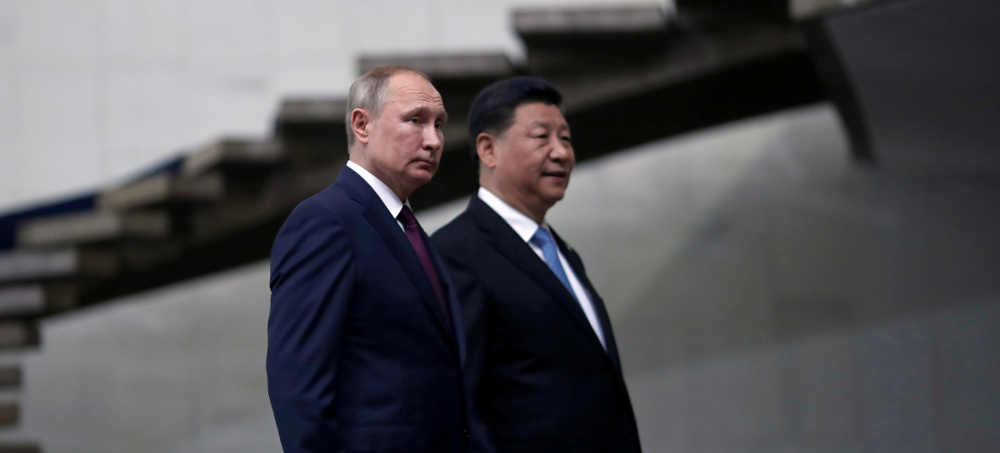 A new report claims China launched cyber-attacks on Ukranian military and nuclear targets. (photo: AFP)
A new report claims China launched cyber-attacks on Ukranian military and nuclear targets. (photo: AFP)
UK investigating claims, but Ukrainian security service says it has ‘nothing to do with’ memos obtained by Times
The UK government confirmed that the National Cyber Security Centre was investigating the allegations, which claim that more than 600 websites, including Ukraine’s defence ministry, were subjected to thousands of hacking attempts coordinated by the Chinese government.
A UK government spokesperson said: “The National Cyber Security Centre is investigating these allegations with our international partners.”
The claims are based on intelligence memos obtained by the Times. However, the Ukrainian security service denied on Friday night that it had supplied any information on the alleged attacks.
It added: “The SBU has nothing to do with the findings of the Times. The Security Service of Ukraine does not currently have such data and no investigation is underway.”
Jamie MacColl, a research fellow at the Royal United Services Institute for Defence and Security Studies, said the reported attempts appeared to fit a Chinese tactic of scanning for vulnerabilities in IT infrastructure, such as firewalls and virtual private networks.
“This sounds relatively routine to me, if true. Some Chinese groups have been retasked to collect intelligence on the Ukraine conflict. Security agencies collect information to inform policy. And that is what appears to have happened in this case.”
The Times said a series of intelligence memos, thought to be prepared by another country, detailed the scale of the hacking and included nuclear targets, which allegedly peaked on 23 February, the day before the Russian invasion.
On 18 March the US president, Joe Biden, warned his Chinese counterpart, Xi Jinping, of “consequences” if China provided material support to Russia during the invasion.
Xi and Vladimir Putin met in Beijing at the start of the Winter Olympics in February and issued a joint statement saying the bonds between the two countries had “no limits”. Xi and Putin also made clear in the statement that they opposed any further expansion of Nato.
Ciaran Martin, a professor of practice at the Blavatnik school of government at Oxford University and former head of the NCSC, said: “We should be very cautious about this in two areas. First, there is an important difference between digital spying and disruptive attack and on the basis of the information publicly available, this looks like the former.
“Second, there isn’t anything in the publicly available evidence that implies collusion between China and Russia. Added to this now, of course, is the official denial from the Ukrainian Security Service. More facts are needed but for now we should not jump to conclusions”.
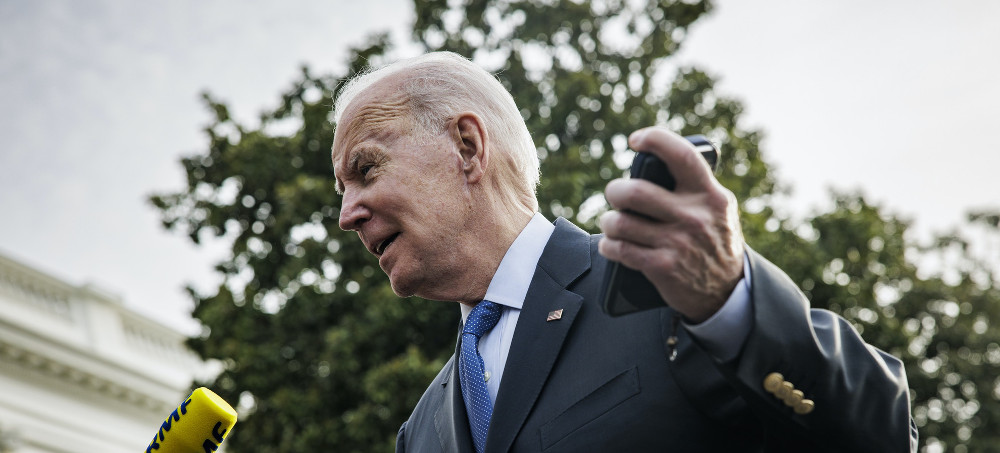 President Joe Biden speaks to members of the media on the South Lawn of the White House before boarding Marine One in Washington, D.C., on March 23, 2022. (photo: Samuel Corum/Bloomberg)
President Joe Biden speaks to members of the media on the South Lawn of the White House before boarding Marine One in Washington, D.C., on March 23, 2022. (photo: Samuel Corum/Bloomberg)
A draft of the executive order obtained by The Intercept would use the Defense Production Act to ramp up mineral production for electric car batteries.
The order would declare that “ensuring robust, resilient, and sustainable domestic industrial base to meet the requirements of the clean energy economy is essential to our national security,” according to a draft of the document that remains in the “pre-decisional” phase. That reasoning follows a renewed push from the administration on its climate change priorities in light of shocks in the oil and gas market following Russia’s invasion of Ukraine. The order would specifically says “domestic mining, beneficiation, and value-added processing of strategic and critical materials from sustainable sources for the production of large capacity batteries for the automotive, e-mobility, and stationary storage sectors is essential to national defense.” The Intercept has reached out to the White House for comment.
Several senators sent President Joe Biden a letter on Wednesday asking him to use authorities such as those contained in the Defense Production Act, which significantly expands the president’s authority to unilaterally alter domestic manufacturing policy in times of crisis, to “support and increase manufacturing capacity and supply chain security for technologies that reduce fossil fuel demand and fuel costs, such as electric heat pumps, efficient electric appliances, renewable energy generation and storage, and other clean technologies.”
The letter — signed by Democratic Sens. Ed Markey and Elizabeth Warren of Massachusetts, Martin Heinrich of New Mexico, Cory Booker of New Jersey, and Jeff Merkley of Oregon — encourages Biden to make the U.S. less dependent on oil drilling abroad while simultaneously supporting climate goals: “Producing efficient electric products and exporting those goods to the E.U. and other foreign markets would help many countries lower their dependency on fossil fuels, and thereby strengthen their own energy security.” It’s the latest example of progressives in Congress urging the president to use his considerable authority to achieve policy victories. In a release earlier this month, the Congressional Progressive Caucus outlined a substantial agenda that could be achieved with the swipe of Biden’s pen. That list included utilizing the Defense Production Act to bolster the production of green energy technology.
The oil industry is also using the Russian invasion of Ukraine as an opportunity to push back on Biden’s energy policies and lobby for increased production. In a meeting with oil and gas executives on Tuesday, JPMorgan Chase CEO Jamie Dimon pitched the White House on his own Marshall Plan, Axios reported, to increase energy production in the West and thereby shore up the U.S. and Western Europe’s energy independence from petrostates like Russia. Dimon’s suggestions at the meeting — at which Biden was present, Axios reported — included more liquefied natural gas facilities in Europe.
Energy Secretary Jennifer Granholm also invoked the Marshall Plan in comments earlier this week. “I think it’s a moment for us to ask at this point in our history, what is going to be our version of the Marshall Plan for clean and secure energy in 2022 and beyond?”
“This clean energy transition could be the peace project of our time,” Granholm said, speaking in Paris. “But peace always comes after struggle. So let’s give this peace project the focus and the commitment and the resources of a war time effort. Our Marshall Plan.”
The draft order also plays into domestic priorities. Last week, Granholm and Sen. Joe Manchin also announced a lithium battery supply chain program in West Virginia, which mineral production and processing would support.
So far Biden has held the line that the long-term solution to record-high gas prices and dependence on petrostates lies with a clean energy transition. In a speech announcing the U.S. would ban imports of Russian fuel oil and gas, in early March, the president said, “[Russia’s invasion] should motivate us to accelerate the transition to clean energy.”
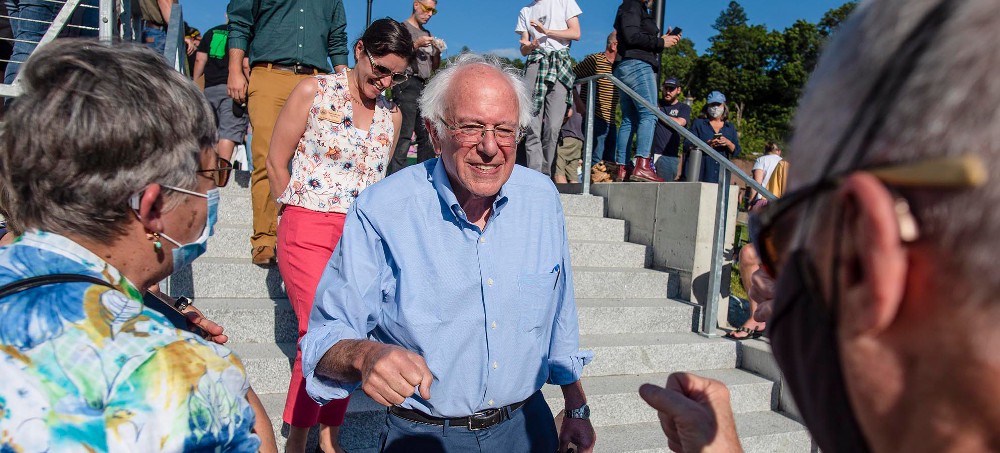 U.S. Sen. Bernie Sanders greets supporters before speaking at a town hall event in Springfield on Saturday, September 4, 2021. (photo: Glenn Russell/VT Digger)
U.S. Sen. Bernie Sanders greets supporters before speaking at a town hall event in Springfield on Saturday, September 4, 2021. (photo: Glenn Russell/VT Digger)
On Wednesday, at a meeting of the U.S. Senate Committee on Budget, Sanders raised an issue that’s been a regular part of his political platform for many years: wealth distribution. “Anyone who thinks we do not have an oligarchy right here in America is sorely mistaken,” he said. “Today in America, multibillionaires like Elon Musk, Jeff Bezos, Richard Branson are off taking joy rides on their rocket ships to outer space.”
Sanders appeared to be citing the three billionaires’ spaceflight companies: SpaceX, Blue Origin and Virgin Galactic, respectively. All three U.S.-based businesses have played a large part in redefining — and even reviving — national conversations around modern space exploration.
Musk, Bezos and Branson have each poured large sums of their own money into those companies: Bezos, for example, spends $1 billion of his own Amazon stock per year on Blue Origin. But while his brief trip to space in a Blue Origin rocket last July could be deemed a “joy ride,” it’s doubtful that he’d call his spending frivolous.
Rather, Blue Origin’s mission statement defines the company’s goals as essential to humanity’s future survival, emphasizing that “in order to preserve Earth, our home, for our grandchildren’s grandchildren, we must go to space to tap its unlimited resources and energy.”
Musk, SpaceX’s founder and CEO, similarly told Time magazine in December that his “goal overall has been to make life multi-planetary and enable humanity to become a spacefaring civilization,” thus preserving the planet. In October, SpaceX was valued at $100.3 billion following a secondary share sale.
To Sanders, those plans are more displays of opulence than humanity-enriching endeavors, especially considering “over half of the people in this country are living paycheck to paycheck,” he said.
“In our country, the two wealthiest people now own more wealth than the bottom 42% of our population,” Sanders added, referencing reports that Bezos and Musk own more wealth than a combined 130 million Americans. Data from Federal Reserve System seems to confirm Sanders’ estimates: In 2021′s fourth quarter, the top 1% of Americans owned 32.3% of the nation’s wealth, while the bottom 50% owned 2.6%.
The pandemic only broadened that wealth gap. Musk, whose net worth is $286 billion as of March 31, gained $121 billion in 2021, according to charity organization Oxfam. The organization estimated that the 10 richest people in the world added more than $400 billion to their fortunes last year.
In 2020, Sanders co-sponsored the Make Billionaires Pay Act, which proposed that individuals with more than $1 billion in net assets pay higher taxes to cover the costs and services for public and private health insurance for uninsured individuals for one year, including prescription drugs and care related to Covid-19.
The bill was introduced to the Senate in August 2020, but no further action was taken.
Unsurprisingly, Sanders has also spoken out against private space companies obtaining government funding. Congress is currently considering sending $10 billion to NASA, which would funnel those funds to a private company in a high-value contract for moon landers. On Wednesday, Sanders tweeted his strong opposition to the provision, arguing that companies like Blue Origin and SpaceX don’t need the cash.
“To my mind, if you’re worth $180 BILLION, if you’ve got mansions and a superyacht, if your hobby is trying to go to the moon or Mars or wherever, you’re doing pretty well for yourself,” Sanders wrote. “No, Mr. Bezos, you don’t need $10 billion in corporate welfare to subsidize your space travel.”
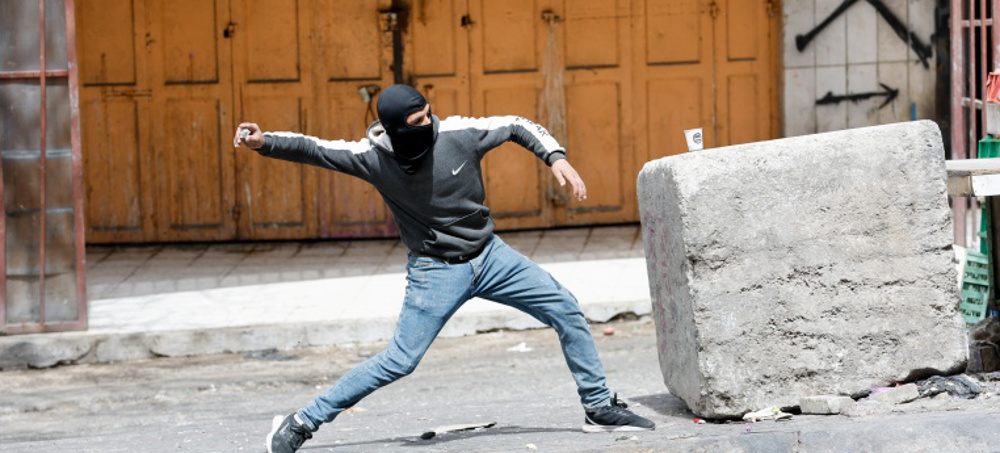 A Palestinian protester hurls a stone at Israeli troops during confrontations in Hebron, in the occupied West Bank. (photo: Mussa Qawasma/Reuters)
A Palestinian protester hurls a stone at Israeli troops during confrontations in Hebron, in the occupied West Bank. (photo: Mussa Qawasma/Reuters)
A 28-year-old Palestinian was shot in the head during confrontations with Israeli forces in Hebron.
The 28-year-old Palestinian was shot and killed “with live ammunition”, the Palestinian health ministry said in a brief statement on Friday. The Palestinian Wafa news agency identified the man as Ahmad al-Atrash – who spent six years in Israeli detention as a political prisoner.
The head of the Hebron governmental hospital was quoted by Maan news agency as saying al-Atrash succumbed to his wounds shortly after arriving at the facility.
Al-Atrash “arrived at the emergency department in very critical condition”, Maan reported, adding an initial examination indicated he was shot directly in the head with a live round.
Confrontations erupted in the centre of Hebron between Palestinians and armed Israeli forces, which fired live rounds and tear gas towards a crowd of young men, according to Maan.
Dozens of Palestinians suffered from tear gas inhalation and were treated at the scene, local media reported.
Hebron, the biggest city in the West Bank, is home to more than 200,000 Palestinians. About 1,000 Jewish settlers live there in illegal settlements under heavy Israeli military protection.
While settler attacks on Palestinians and their property is a regular occurrence across the West Bank, the situation in Hebron’s old city is particularly volatile.
Palestinians injured across West Bank
Meanwhile, the Palestinian Red Crescent said it also treated 70 people wounded in confrontations with the Israeli army on Friday in the city of Nablus in the northern West Bank.
A young man was shot in the “hand and foot” by Israeli forces during a march in Bilin, a small village of about 1,700 inhabitants east of the West Bank city of Ramallah, in commemoration of Land Day.
Palestinians commemorate Land Day annually, dating back to March 30, 1976, when six unarmed Palestinians were killed by Israeli forces during protests against the Israeli government’s decision to expropriate large tracts of Palestinian-owned land.
Israeli forces targeted protesters with live rounds, tear gas canisters, and sound bombs, which led to the man’s injury as well as dozens of cases of tear gas inhalation, local media reported.
At the Al-Aqsa Mosque in Jerusalem, the third holiest site in Islam, authorities said more than 30,000 people attended Friday prayers on the eve of Ramadan, which begins this weekend.
There were no reports of protests or violence.
Last year protests and clashes in Jerusalem during Ramadan ignited an 11-day Gaza war and Jewish-Arab violence in Israel’s mixed cities.
On Thursday, the Israeli army raided the West Bank city of Jenin, and earlier in the week raided the homes of two other Palestinians.
Israeli forces killed three Palestinians in the West Bank, including one suspected of carrying out a stabbing attack near the illegal settlement of Gush Etzion south of Bethlehem city.
Israel captured the West Bank in the 1967 Middle East war and has established dozens of illegal settlements where nearly 500,000 settlers reside.
The Palestinian leadership wants the West Bank as part of a future state and views the illegal settlements as a major obstacle to resolving the conflict.
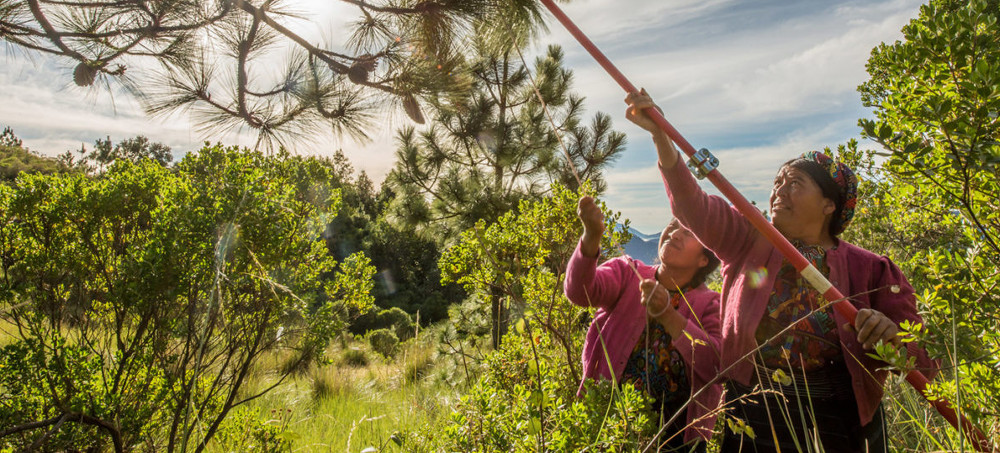 Titled “Sink or swim”, the authors of the report, Climate Focus and the World Resources Institute, focus on the potential of Indigenous peoples and local community lands in Brazil, Colombia, Mexico, and Peru to mitigate climate change. (photo: Sergio Izquierdo)
Titled “Sink or swim”, the authors of the report, Climate Focus and the World Resources Institute, focus on the potential of Indigenous peoples and local community lands in Brazil, Colombia, Mexico, and Peru to mitigate climate change. (photo: Sergio Izquierdo)
Titled “Sink or swim”, the authors of the report, Climate Focus and the World Resources Institute (WRI), focus on the potential of IPLC lands in Brazil, Colombia, Mexico, and Peru to mitigate climate change. The report then peers into whether this potential is reflected in the respective countries’ climate-related policies and nationally determined contributions (NDCs) to meeting the Paris Agreement’s targets.
The release of the report comes days before the U.N. is set to release an assessment on climate mitigation with recommendations on how best to reduce carbon emissions and keep global temperatures below 1.5 degrees Celsius of pre-industrial levels.
Juan Carlos Altamirano, the WRI economist who led the report’s research calculating emissions sequestered in IPLC lands, told Mongabay that they had always been aware that IPLC lands were carbon sinks. But their investigation showed that this was the case in at least 90% of the research target areas.
In the four Latin American countries, research also revealed that each hectare (2.5 acres) of IPLC lands sequesters an average of 30 metric tons (33 tons) of carbon every year, about twice as much as lands outside IPLC protection. This equates to about 30% of the four countries’ Paris Agreement targets for 2030.
Without these contributions, states the report, other key economic sectors would have to pick up the slack to achieve the emission reduction targets promised. For example, Brazil and Colombia would have to retire 80% percent of their vehicle fleets to account for the loss of sequestration services their IPLC forests provide.
“Sometimes politicians or developers think that these lands are unproductive […] that raising cattle or cutting the trees for timber will make more sense from an economic point of view,” says Altamirano.
“But they don’t take into account all the ecosystem services that these lands are providing. And if you don’t take care of them, it will be even more difficult to do regular economic activities like agriculture or raising cattle.”
Cattle ranching, mining, and logging are major threats to these territories, says the report. A recent study found that most of the deforestation driven by commercial agriculture in all four countries is illegal, with the minimum extent of illegal mining at about 75% in Brazil, Colombia and Mexico.
“We are a stone in the shoe of development,” says Harol Rincon Ipuchima, Indigenous leader of the Maguta people in the Colombian Amazon and Climate Change and biodiversity coordinator at the Coordination of Indigenous Organizations of the Amazon Basin (COICA).
Ipuchima says that there is a need to diversify the economy, not based on soya or deforestation, sacrificing Mother Earth for economic development, but rather based on learning from how Indigenous communities have managed their territories.
“We have all the data to show that we are efficient and effective and that we should be taken into account,” says Ipuchima. “Everything that we are and everything that we have – our languages, our way to understand the world, our art – it’s the full package. And these elements come together to fulfill the standards to mitigate [climate change] and to protect biodiversity.”
Gaps in policy and governance
In South-East Asia, increased poverty and loss of livelihoods has played a role in pushing some IPLC community members towards unsustainable mining projects on their lands, or clearing forests and trees for cash crops.
According to researchers, this occurs as some people begin to lose land and their traditional relationship with nature, interact more with the market, and see financial incentives towards unsustainable activities as holding more sway than conservation. Researchers suggest securing and supporting IPLC traditional livelihoods and lands to prevent a slippery slope into unsustainable practices.
Yet unlike many parts of Africa and Asia, the report acknowledges that Brazil, Colombia, and Mexico are among the few countries in the world that have provided formal recognition of IPLC rights on most of their customary lands.
While Mexico, due to its history of agrarian reform, only needs to title the remaining 0.5% of IPLC lands according to the report, the other three countries have a longer way to go. The report’s authors call on governments to title all IPLC lands and the report details that titling processes should be sped up by dedicating sufficient resources to agencies responsible for land titling, providing funding to communities to cover their costs and simplifying titling procedures.
The role of IPLC land rights policies in the target countries, and the varying ways these can be applied, are also underlined. In Peru, the country’s superior courts have upheld the right of Indigenous people to exclude third parties from entering their lands, including those bearing mineral licenses.
Meanwhile, in both Mexico and Colombia, limits can still be placed on the scope of IPLC rights. For example, the state can grant mining licenses in titled IPLC lands without requiring communities’ consent.
“A lot of the countries have good laws on the books, but unfortunately, they often don’t implement their own laws, and that goes for the laws that protect Indigenous people’s lands,” says Darragh Conway, Climate Focus lead legal counsel who headed up the report’s policy aspects.
Conway says that they consistently see that when Indigenous and local communities stand up for their rights in the face of development projects that could destroy their forests and livelihoods, they are threatened with violence, criminalization, or legal intimidation.
According to Global Witness, Colombia leads in the world with 65 environmental defenders murdered in 2020, with Brazil and Mexico also having some of the highest global figures of 30 and 20 murders reported respectively. Internationally, over a third of all the fatal attacks reported target Indigenous people, with the figure going up to 50% in Mexico.
While all four countries have signed the Escazu Agreement—which includes provisions to protect the rights of environmental defenders in Latin America and the Caribbean—only Mexico has ratified it.
The report calls on the other three nations to follow suit and for all four governments to adopt legislation that ensures its commitments, such as strengthening law enforcement capacities to protect IPLCs from violence, are implemented.
Land rights on the international stage
The latest IPCC climate report released in February mentioned IPLC land rights 58 times, showcasing a shift in the way land rights are viewed as a climate change mitigation and adaptation solution.
Indigenous land rights have also taken center stage at negotiations on the U.N. Convention on Biological Diversity’s post-2020 Global Biodiversity Framework which concluded in Geneva on Tuesday. Indigenous caucus members and negotiators acknowledged that conserving biodiversity and reversing the species extinction crisis also entails securing IPLC land rights on a large scale.
Indigenous territories are estimated to contain 36% of the world’s remaining intact forest landscapes and 80% of the Earth’s remaining biodiversity.
The new global framework will be adopted at the U.N. biodiversity conference, COP 15, in Kunming, China, in May 2022. All four countries in the report have also signed the U.N. climate summit’s Glasgow Declaration on Forests and Land Use last November, committing to end forest loss and land degradation by 2030.
According to the report, placing the protection and empowerment of IPLCs lands at the heart of both the biodiversity framework and forest policy is crucial to having the Paris Agreement’s target within reach.
“How is it possible that governments, after having so much evidence based on Western modern science, still don’t understand the relevance [of Indigenous communities]?” said Guadalupe Yesenia Hernández Márquez, a Zapotec Indigenous leader from Oaxaca in Mexico who was part of the Indigenous people’s caucus at the U.N. biodiversity negotiations.
“We are requesting a role in the post-2020 [global biodiversity framework] because we have shown that we are needed,” said Márquez. “We want to continue conserving [biodiversity] as our lives depend directly on nature – something sacred to us.”
Special Coverage: Ukraine, A Historic Resistance
READ MORE
Follow us on facebook and twitter!
PO Box 2043 / Citrus Heights, CA 95611

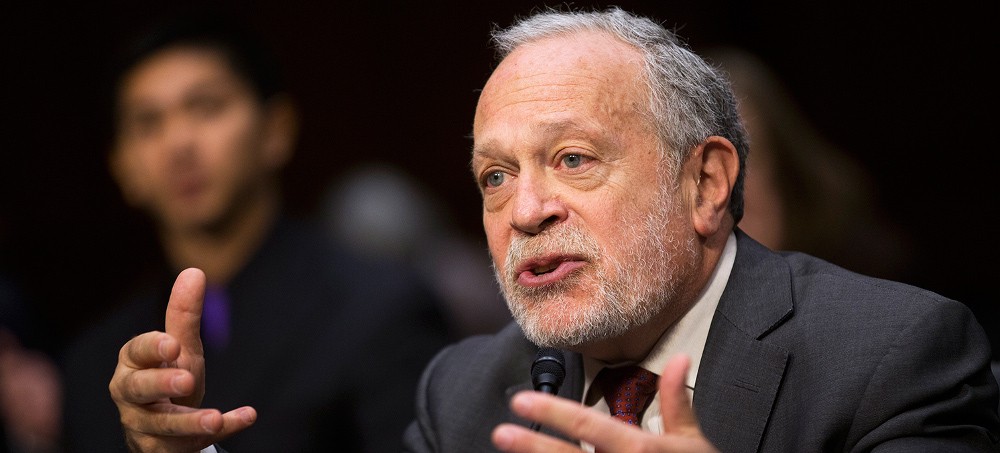

No comments:
Post a Comment
Note: Only a member of this blog may post a comment.